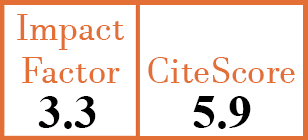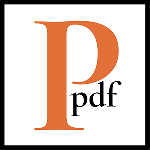Full Papers
Primary efficacy of netakimab, a novel interleukin-17 inhibitor, in the treatment of active ankylosing spondylitis in adults
S. Erdes1, E. Nasonov2, E. Kunder3, A. Pristrom4, N. Soroka5, P. Shesternya6, T. Dubinina7, S. Smakotina8, T. Raskina9, D. Krechikova10, T. Povarova11, T. Plaksina12, I. Gordeev13, V. Mazurov14, O. Reshetko15, E. Zonova16, A. Eremeeva17, E. Chernyaeva18, T. Makulova19, R. Ivanov20
- Nasonova Research Institute of Rheumatology, Moscow, Russia.
- Nasonova Research Institute of Rheumatology, Moscow, Russia.
- Academy for Postgraduate Education, Minsk, Belarus.
- Academy for Postgraduate Education, Minsk, Belarus.
- Belarus State Medical University, Minsk, Belarus.
- Krasnoyarsk State Medical University, Krasnoyarsk, Russia.
- Nasonova Research Institute of Rheumatology, Moscow, Russia.
- Regional Clinical Hospital, Kemerovo, Russia.
- Kemerovo State Medical University, Kemerovo, Russia.
- Regional Clinical Hospital, Smolensk, Russia.
- Road Clinical Hospital, Saratov, Russia.
- Clinical Hospital, Nizhniy Novgorod, Russia.
- City Clinical Hospital No. 15, Moscow, Russia.
- North-Western State Medical University, St. Petersburg, Russia.
- Regional Clinical Hospital, Saratov, Russia.
- Municipal Clinical Inpatient Facility No. 1, Novosibirsk, Russia.
- JSC BIOCAD, St. Petersburg, Russia. eremeevaav@biocad.ru
- JSC BIOCAD, St. Petersburg, Russia.
- Institute for Medical Research, St. Petersburg, Russia.
- JSC BIOCAD, St. Petersburg, Russia.
CER11819
2020 Vol.38, N°1
PI 0027, PF 0034
Full Papers
Free to view
(click on article PDF icon to read the article)
PMID: 31025924 [PubMed]
Received: 15/10/2018
Accepted : 25/02/2019
In Press: 16/04/2019
Published: 06/02/2020
Abstract
OBJECTIVES:
Netakimab (NTK) is a humanised monoclonal antibody targeting interleukin-17A, previously investigated in a phase 1 trial in healthy volunteers. Here, we report the results of a phase 2 trial, conducted to assess safety and pharmacokinetics (PK), to establish a therapeutic dose of NTK in a target population of patients with active ankylosing spondylitis (AS).
METHODS:
89 patients with active AS, despite non-steroidal anti-inflammatory (NSAID) drug treatment, were randomised to receive 40, 80 or 120 mg of subcutaneous NTK or placebo at weeks 0, 1, 2 and q2wk thereafter until week 12. The primary endpoint was to achieve a proportion of patients with ≥20% improvement in Assessment of Spondyloarthritis.
RESULTS:
Rates of ASAS20 response at week 16 for NTK with 95%CI for difference in ASAS20 rates NTK vs. placebo were 72.73% [1.69%;58.05%], 81.82% [12.36%;65.56%], 90.91% [23.71%;72.39%] at doses of 40, 80 and 120 mg. The response rate in the placebo arm was 42.86%. The pre-specified margin of clinically non-meaningful difference was 10%. Superiority to placebo was confirmed for doses 80 and 120 mg. The most frequent adverse events (AEs) were lymphocytosis, neutropenia, and asymptomatic bacteriuria. No dose-dependent toxicity or serious adverse events (SAEs) were observed. The most effective dose with the fastest response onset and favourable safety profile was 120 mg.
CONCLUSIONS:
The data obtained demonstrate the efficacy and favourable safety profile of NTK in active AS. Clinical development of NTK will be continued in a phase 3 trial aimed to evaluate the efficacy of 1-year treatment with NTK 120 mg in patients with AS.


